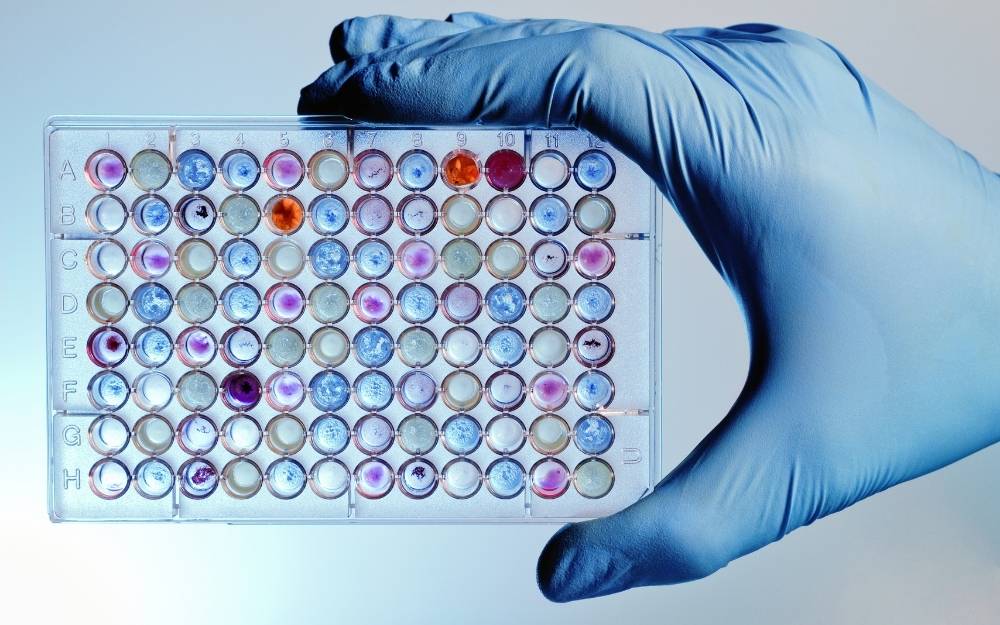How well do we truly understand the intricacies of cellular signalling? In the realm of biological research, calcium flux assays emerge as a pivotal technique offering profound insights into intracellular processes. This fluorescence-based method, tracking the release of calcium ions within cells, serves as a crucial window into the complex world of cellular communication. By harnessing a range of indicators, researchers can illuminate the dynamics of calcium signalling. This article delves into the principles, methodologies, and applications of calcium flux assays, shedding light on their significance in advancing our understanding of cellular functions.
Understanding Calcium Flux Assay Principles
A calcium flux assay is an essential technique in cellular biology, primarily used to measure intracellular calcium flux. This assay employs a fluorescence-based method to monitor calcium ion (Ca²⁺) release into the cytoplasm, a critical indicator of cellular signalling events. The process begins by preloading cells with a calcium-sensitive fluorescent dye. Upon calcium release, this dye binds to the ions, resulting in an increase in fluorescence intensity. This change in intensity is directly proportional to the amount of calcium mobilised, allowing researchers to quantify calcium signalling activities accurately. The method’s precision in detecting these changes makes it indispensable for studying various cellular processes and reactions to stimuli.
- Fluo-4
- Fluo-8
- Fura-2
- Indo-1
- Cal-520
Calcium flux assays are vital for understanding cellular signalling pathways due to their high sensitivity and specificity in detecting calcium dynamics. Calcium ions are crucial secondary messengers in many physiological processes, including muscle contraction, neurotransmission, and hormone secretion. By enabling precise measurement of calcium release, these assays contribute significantly to the study of cellular responses and signalling mechanisms. Researchers utilise these insights to explore disease pathogenesis and the action of potential pharmaceuticals, enhancing drug discovery efforts and therapeutic advancements. The ability to accurately track calcium signalling underpins the development of targeted interventions in fields such as oncology and neurology.
Methodologies in Calcium Flux Assay
Calcium flux assays utilise various methodologies to measure intracellular calcium changes, crucial for understanding cellular signalling. The general approach involves preparing cell suspensions, loading them with a calcium-sensitive fluorescent dye, and then observing the fluorescence changes post-ligand activation. These changes are indicative of calcium mobilisation within cells and provide insights into cellular responses to external stimuli.
Microplate readers and flow cytometry are pivotal techniques in calcium influx assays. Microplate readers are used for measuring fluorescence changes as they can efficiently handle high-throughput screening by detecting changes in fluorescence intensity across multiple samples simultaneously. This method is advantageous for its speed and ability to process large volumes of data. In contrast, flow cytometry offers real-time measurements of calcium influx, capturing dynamic changes at the single-cell level. This technique provides a high-resolution analysis of cellular responses, ideal for detailed studies where single-cell precision is necessary. Both techniques complement each other, providing a comprehensive analysis of calcium signalling.
| Method | Description |
| Microplate Reader | Measures fluorescence changes for high-throughput screening. |
| Flow Cytometry | Offers real-time, single-cell analysis of calcium influx. |
| Dye Loading | Involves preparing cells with calcium-sensitive dyes before ligand activation. |
The protocol for calcium flux assays requires careful preparation to ensure accurate results. Dye loading is a critical step, where cells are preloaded with a fluorescent dye sensitive to calcium changes. Probenecid is often used to inhibit anion transporters and retain the dye within the cell, preventing dye leakage and ensuring reliable fluorescence readings. Ensuring optimal dye concentration and incubation times is essential to avoid cytotoxicity and achieve precise measurements. This meticulous preparation allows researchers to accurately assess calcium dynamics and cellular signalling pathways.
Applications of Calcium Flux Assays in Research

Calcium signalling plays a pivotal role in various physiological processes and the pathogenesis of numerous diseases. Calcium ions serve as secondary messengers in a multitude of cellular functions, such as muscle contraction, neurotransmitter release, and hormone secretion. These ions are integral to maintaining cellular homeostasis and orchestrating complex cellular responses to external stimuli. In the context of disease, aberrations in calcium signalling pathways can contribute to conditions like cancer, neurodegenerative disorders, and cardiovascular diseases. Understanding these pathways through calcium flux assays provides crucial insights into the underlying mechanisms of these conditions, facilitating the development of targeted therapeutic interventions.
- GPCR evaluation: Calcium flux assays are essential for studying G protein-coupled receptors (GPCRs), which are critical drug targets.
- Drug discovery: These assays support the identification of potential drug candidates by assessing their effects on calcium signalling pathways.
- Disease pathogenesis: Researchers use these assays to explore the role of calcium signalling in disease development and progression.
- Cellular signalling: The assays help elucidate the dynamics of calcium as a signalling molecule in various cellular contexts.
Calcium flux assays are extensively utilised in high-throughput screening, particularly within drug discovery. This approach enables researchers to evaluate vast libraries of chemical compounds rapidly, identifying those that modulate calcium signalling pathways effectively. In particular, these assays are instrumental in assessing the activity of compounds on GPCR targets, which play a significant role in numerous physiological processes and are implicated in various diseases. By employing high-throughput screening methodologies, researchers can efficiently pinpoint promising therapeutic candidates, accelerating the drug development pipeline and bringing innovative treatments to the forefront of medical research.
Tools and Techniques for Calcium Measurement
Selecting the right assay kit is fundamental in calcium measurement, as it determines the precision and accuracy of the results. Assay kits like Fluo-8 and Fura-2 are invaluable tools in the study of calcium dynamics, providing researchers with the means to investigate intricate signalling pathways. These kits are designed to cater to specific experimental needs, allowing for the measurement of calcium flux with high temporal and spatial resolution. The choice of a suitable kit can significantly impact the quality of the data collected, guiding researchers in their exploration of cellular signalling and physiological processes.
- Fluo-8 Kit: Known for its high sensitivity, making it ideal for detecting subtle changes in calcium concentration.
- Fura-2 Kit: Offers ratiometric measurement, enabling accurate determination of intracellular calcium levels.
- Indo-1 Kit: Provides dual-wavelength emission, facilitating precise analysis of calcium signals in complex experimental setups.
When selecting an assay kit, considerations of sensitivity and specificity are paramount. Sensitivity pertains to the kit’s ability to detect minimal changes in calcium concentration, crucial for experiments requiring fine detail. Specificity, on the other hand, ensures that the assay accurately targets calcium ions without interference from other cellular components. Researchers must evaluate these factors alongside their experimental objectives to choose a kit that best suits their research requirements, thereby optimising data accuracy and reliability.
Data Interpretation and Analysis in Calcium Flux Assays
In calcium flux assays, the use of controls is crucial for accurate data analysis. How do researchers ensure the reliability of their assay results? By normalising the ratio of maximal signal to background using control wells, researchers can correct for any variability that might arise during the assay process. This normalisation process allows for a more precise interpretation of the data, ensuring that the observed changes in fluorescence are due to genuine calcium ion activity rather than artefacts. This step is essential in producing consistent and reliable data, which is critical for subsequent analysis and interpretation.
Real-time monitoring is a pivotal aspect of calcium flux assays, offering deep insights into the dynamics of calcium signalling. What advantage does real-time monitoring provide? It captures the temporal changes in calcium ion concentrations within cells, reflecting the immediate cellular responses to stimuli. This real-time data is invaluable for understanding how cells communicate and react to various signals, providing a comprehensive view of the signalling pathways involved. By analysing these temporal patterns, researchers can gain a deeper understanding of the mechanisms driving cellular responses, which is essential for both basic research and drug development.
Kinetic analysis techniques further enhance the interpretation of calcium influx data. How do these techniques contribute to data analysis? Kinetic analysis involves examining the rate of change in fluorescence intensity over time, providing insights into the speed and magnitude of calcium ion mobilisation within cells. These analyses can reveal subtle differences in cellular responses and identify potential effects of experimental treatments or conditions. By focusing on the kinetics of calcium signalling, researchers can discern not just the presence of a response, but the nature and dynamics of that response, enriching the overall understanding of cellular signalling mechanisms.
Challenges and Innovations in Calcium Flux Assays

Calcium flux assays face several challenges that can impact the accuracy and reliability of results. One primary challenge is maintaining assay sensitivity to ensure that subtle changes in calcium ion concentrations are accurately detected. Sensitivity is crucial, especially in experiments where small fluctuations in calcium levels can indicate significant biological events. Another challenge is reducing background interference, which can obscure true signals and lead to erroneous conclusions. Background noise often results from non-specific binding of the fluorescent dye or from external sources of fluorescence, making it essential to employ strategies that enhance signal clarity.
- Full Spectrum Profiling: This innovation captures emissions across contiguous wavelengths, improving resolution and sensitivity in detecting calcium signals.
- Advanced Fluorescent Dyes: Development of new dyes with higher specificity reduces background noise, enhancing assay accuracy.
- Miniaturisation Techniques: These techniques allow for conducting assays in smaller volumes, increasing throughput and reducing reagent costs.
Optimisation techniques play a vital role in enhancing the performance of calcium flux assays. Precise control over experimental conditions, such as dye concentration and incubation times, can significantly impact the quality of results. Fine-tuning these parameters ensures that the fluorescence signals are reflective of actual calcium ion activity, rather than artefacts of the assay process. Additionally, employing inhibitors like probenecid can help retain dyes within cells, further reducing background interference and improving the fidelity of the assay. These optimisation strategies are crucial for advancing the reliability and applicability of calcium flux assays in research.
Final Words
Calcium flux assays serve as a cornerstone in understanding intracellular calcium mobilization, vital for cellular signalling research. This blog explored the principles behind these fluorescence-based methods, highlighted methodologies like microplate readers and flow cytometry, and examined various research applications, including drug discovery.
Selecting the right assay tools is crucial, with sensitivity and specificity being key factors. Data analysis, involving real-time monitoring and kinetic techniques, enhances the understanding of calcium dynamics. Despite challenges like sensitivity maintenance, ongoing innovations and optimizations continue to refine assay accuracy, ensuring they remain integral to scientific exploration.

Sophie is an early childhood education specialist with a focus on cognitive and emotional development in young children.
